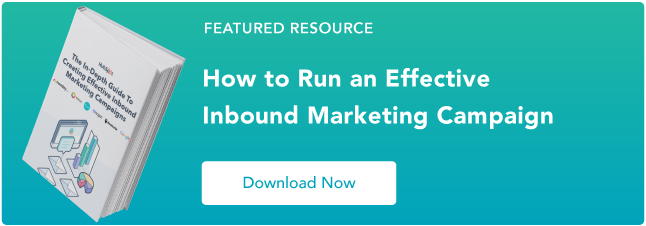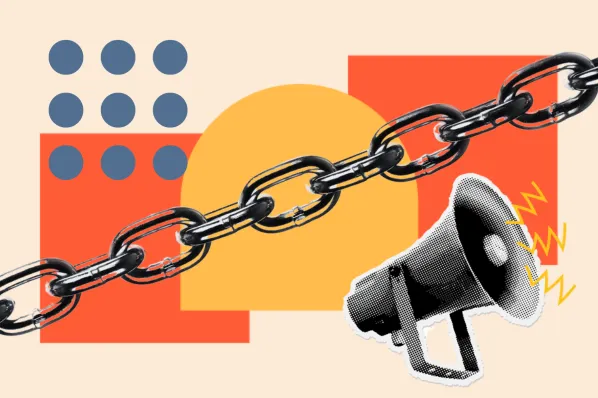If you're new to inbound marketing, you've probably heard that one way to grow traffic is to get more links ... but did you know that there are actually several different types of links you can have?
Learn how to run more impactful, measurable marketing campaigns.
We bucket links into three different categories: internal links, outbound links, and inbound links. All are important to have, but the most sought-after are usually inbound links.
But what exactly are inbound links? And how are they different from the other types of links?
Let's clear this all up. In this post, we'll talk about the definition of inbound links, why we need them, what a good one looks like, and how to get more of them.
What Is an Inbound Link?
An inbound link is a link coming from another site to your own website. "Inbound" is generally used by the person receiving the link. For example, here's an inbound link to our co-founder Dharmesh's blog. Dharmesh could say, "I received an inbound link from HubSpot."
Outbound links are links from your website to another website. The link to Dharmesh's blog we talked about earlier is an outbound link on HubSpot's blog, and an inbound link on Dharmesh's blog.
Internal links are links on a certain website or blog post that links to another page on that same website.
That's the basics. If you want, you can learn more about the differences between these three types of links here.
Why Do I Need Inbound Links?
Reason #1: Search Engine Optimization (SEO)
Websites that receive many inbound links can be more likely to rank higher in search engines. Basically, inbound links tell site crawlers that your website is an authority on a certain subject -- so the more inbound links you have from high quality, high authority sites, the better your website can rank in search engine results pages (SERPs).
Search engines don't treat all inbound links the same and inbound links isn't the only ranking factor they consider.
Reason #2: Referral Traffic
If someone posts an inbound link on their website or blog, people who see that link might click on it, and you'll benefit from that referral traffic. For example, many of you who clicked the link to Dharmesh's blog up there may not have visited his blog otherwise.
The volume of traffic you get from a referral traffic depends, of course, on how much traffic that blog or website receives in the first place.
What Does a Good Inbound Link Look Like?
A good inbound link:
- Comes from authoritative website.
- Uses proper anchor text.
What's all this anchor text stuff about? Anchor text is the text copy that is hyperlinked, like this. (The anchor text there is "like this.") Good inbound links not only have anchor text, but they also have natural anchor text. Here's what Google says is unnatural:
Google understands the context of a link -- so more generic "learn more" and "click here" anchor text can be just as valuable as keyword-optimized anchor text.
How Do I Build My Inbound Links?
Because good inbound links require an authoritative source, you can't just ask your little brother to link to you on his fishing blog. Here's a post that teaches you 32 ways to build inbound links.
Just don't do any of the five B's of Bad Link Building: Borrowing, Begging, Bartering, Bribing, or Buying.
Want to learn more about link building in general? Check out this post on the anatomy of a link.
Link Building
.png?width=112&height=112&name=cover-how-to-run-inbound-marketing-campaign%20(1).png)


.jpg)







![How to Find & Add Nofollow Links to Your Website [Step by Step]](https://53.fs1.hubspotusercontent-na1.net/hubfs/53/how-to-add-nofollow-links.jpg)